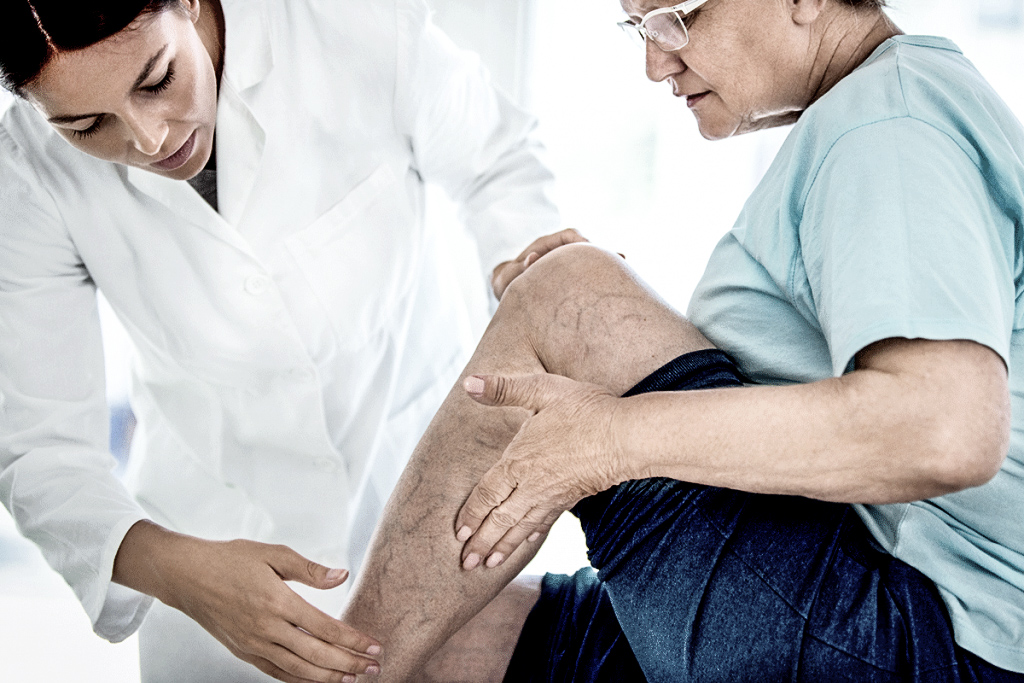By: Nekitia A. Hyde, BS, Healthcare Leadership, RDMS (AB, Ob/Gyn), RVT
Did you know that as many as 2 million Americans could develop deep vein thrombosis – commonly referred to as DVT or blood clots – each year? Yet, only 26% of the population knows what it is?
March is DVT awareness month, and Northeast Georgia Health System wants to help increase awareness of this common medical condition and an associated complication – pulmonary embolism.
What is DVT?
DVT is a deep blood clot, typically in the legs. Many people who develop DVTs experience leg pain or swelling, but in some cases, there may not be any symptoms. DVTs can become fatal if a blood clot loosens and lodges in the lungs.
How does a DVT develop?
DVT occurs when there is an over-coagulation or clotting of blood in a vein vessel. Under normal circumstances, the body clots naturally to heal itself. An example is if a child falls off of a bike and develops an open wound on their knee. The human body typically sends thickened blood platelets to the wounded knee to stop the bleeding from the natural healing process. However, this should not happen inside of our body, within the vessel.
Where do DVTs develop?
A “deep” vein thrombosis develops in the larger veins of the body. Most commonly, the clots form:
- In the groin (common femoral vein)
- Behind the knee (popliteal vein)
- In the calf of the leg (posterior tibial vein).
What causes DVT?
There are a variety of causes of DVT, including:
- Prolonged standing/sitting.
- Traveling for long periods.
- Certain medications and medical diagnoses.
- Family History
What are the symptoms of DVT?
The common symptoms due to a DVT are pain, swelling and redness in the affected area. Some have described a feeling of “heaviness” in the limb.
Are there complications associated with DVT?
If the clot dislodges or moves from the area, it may travel in the bloodstream up to the lungs. The medical terminology for this event is “Pulmonary Embolism” (PE). When this occurs, the patient becomes critical because of the lack of oxygen into the lungs, potentially causing shortness of breath, chest pain or fainting.
Treatment for pulmonary embolism
If treated early, patients are admitted into the hospital, given oxygen and medicated with blood thinners. The patient may also be directed to take blood thinners daily as an outpatient for a certain amount of time following hospital discharge.
Other patients that experience larger clots to the lungs from DVTs that developed to PE’s could be candidates for de-embolization procedures by specialized vascular surgeons. In these procedures, the clots are surgically removed from the lungs.
If not treated quickly, a pulmonary embolism could be fatal due to the lack of oxygen to the lungs.
How do you prevent DVT?
In some cases, DVT can be prevented. Ways to prevent DVTs include:
- Know your family’s medical history.
If you have a family history of DVT, share this with your medical provider. Remind them of your medical history if you are referred out for any procedure. - Stay active.
Exercise is good for our body in so many ways. As always, talk to your medical provider before starting any new exercise program to discuss what is best for you. - Schedule breaks.
Allow yourself time to get up and walk around if you are traveling for an extended period. This keeps the blood from becoming stagnant in the vein. Consider wearing compression socks or stockings when traveling for extended periods.
How does the radiology team at NGHS diagnose DVT and pulmonary embolism?
The radiology department at Northeast Georgia Health System (NGHS) uses Ultrasound and CT to diagnose deep vein thrombosis and pulmonary embolisms. NGHS hires only registered sonographers and registered vascular technologists trained and skilled to examine the blood vessels of the limbs of the body for DVTs. Our registered CT technologists image the lungs for PEs. Board-certified vascular surgeons and radiologists read the reports. The findings in all of our NGHS radiology reports play a significant part in these patients’ treatment plans.
Learn More
To learn more about DVT and other vascular diseases, visit the NGHS Vascular Care & Surgery page.
About Nekitia A. Hyde
Mrs. Hyde has more than 20 years experience registered in both vascular and general ultrasound. She has been the NGHS Ultrasound Supervisor for seven months. She is a Navy veteran with a bachelor’s degree in healthcare leadership.


